- Pics and clips from "To Inflict" -
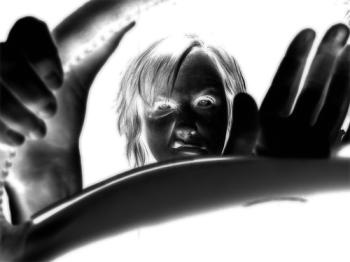
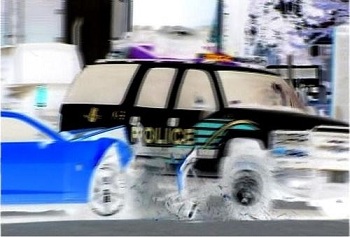
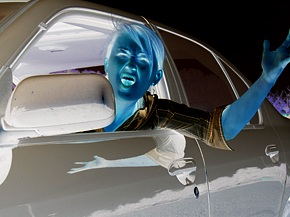
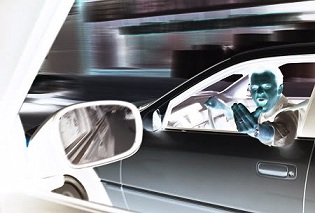
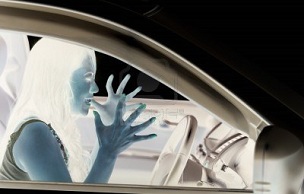
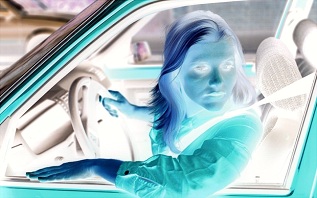
Someone cuts you off while you're driving on the highway or steals the parking space you've been patiently waiting for. Is your first instinct to (a) take a deep breath and move on; (b) honk and then move on; or (c) repeatedly honk, yell out and pound your fists against your steering wheel, wondering how the other person even got a driver's license in the first place?
Those high-anger drivers who have the latter response are a source of alarm for counseling psychologist Jerry Deffenbacher, PhD, who notes that even typically calm, reasonable people can sometimes turn into warriors behind the wheel; when provoked, they yell obscenities, wildly gesture, honk and swerve in and out of traffic, and may endanger their lives and others.
In Deffenbacher's research, high-anger drivers--who identify themselves as such--are assessed on their driving tendencies through questionnaires, driving diaries, computer driving simulations and imagery exercises. From these studies, Deffenbacher has created relaxation and imagery interventions to help counter road rage and make the nation's roads safer.
"The good news is that we can do something about [road rage],"
Deffenbacher said. "We can reduce it and modify it somewhat to make
people feel better on the road."
To find out what's instigating more
road rage, Deffenbacher compares aggressiveness, risk-taking and
personality traits of high-anger drivers with those of low-anger
drivers--those who focus their attention on safe driving, rethink
anger-provoking situations in less negative ways and use calming or
distracting behaviors, such as turning on the radio.
His studies revealed that high-anger drivers:
-Engage in hostile, aggressive thinking. High-anger drivers report more judgmental and disbelieving thoughts about other drivers than low-anger drivers do. For example, they're more likely to insult other drivers or state disbelief about the way others drive. They also have more vengeful and retaliatory thoughts about other drivers, sometimes plotting ways to physically harm them.
-Take more risks on the road. High-anger drivers in his studies report more risky behavior in the prior three months than low-anger drivers do. They more often speed--usually 10 to 20 miles per hour over the speed limit--rapidly switch lanes, tailgate and enter an intersection when a light turns red.
-Get angry faster and behave more aggressively. High-anger drivers most commonly reported the following aggressive behaviors: swearing or name-calling, driving while angry, yelling at the driver or honking in anger. They were angry slightly more than two times a day and averaged just over two aggressive behaviors per day, whereas low-anger drivers were angry slightly less than once per day and averaged less than one aggressive behavior per day. This pattern held for low- and high-anger drivers who drove equally as often and an equivalent number of miles.
-Have more accidents. In driving simulations, high-anger drivers have twice as many car accidents--either from a collision with another vehicle or off-road crash. They also report more near-accidents and receive more speeding tickets. However, the two groups are equal in the number of accidents they have that involve major injuries; Deffenbacher speculated that's because these types of crashes are a rare occurrence anyway.
-Experience more trait anger, anxiety and impulsiveness. High-anger drivers are more likely to get in a car angry, which may stem from work or home stress. They generally tend to express anger in more outward and less controlled ways as well as react impulsively.
Making the roads safer
Encouragingly, a combination of cognitive and relaxation interventions have shown promise for reducing road rage among high-anger drivers, Deffenbacher said. He has done several studies geared to enhance safe driving behaviors by testing relaxation interventions and cognitive restructuring, or reframing of negative events.
For example, in his studies, college student participants who reported high-anger driving and wanted to seek counseling for it were assigned to attend eight therapy sessions involving either relaxation or cognitive relaxation therapy. In the relaxation-only condition, the researchers taught students deep breathing and other basic relaxation techniques. In the cognitive-relaxation therapy condition, they taught students similar relaxation methods but added cognitive change strategies as well. Both groups practiced skills to better control their anger while visualizing anger-provoking driving situations, such as someone cutting them off in traffic, and then practiced these skills when they were actually driving.
His studies have shown that both interventions are equally effective in curbing road rage. But, he noted, they don't take away a person's anger completely--rather they reduce the frequency and intensity of it.
Taken together, "The studies suggest that relaxation, cognitive-relaxation and cognitive-behavioral interventions can lower anger behind the wheel, aggressive anger expression and aggression, and lower general anger as well," Deffenbacher said.
Our thanks for contributions from this article go out to Melissa Dittmann.